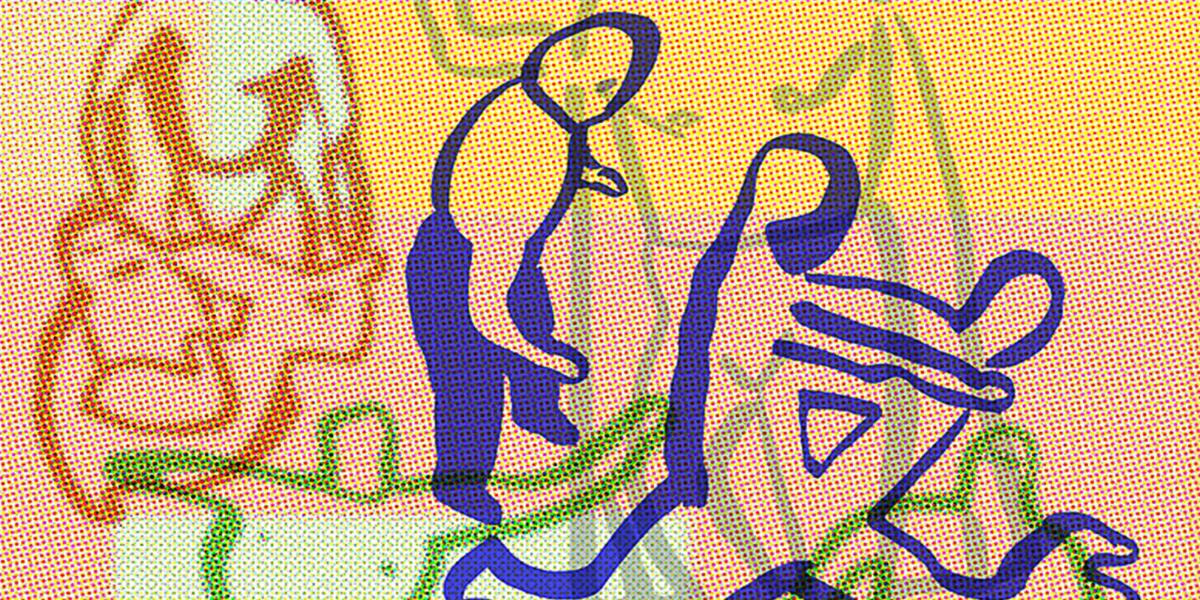When Young Eyes Witness Horrible Things
On a late winter's day in 1997, a 7-year-old boy watched as his mother—holding her 18-month-old son in her arms—was fatally shot by her boyfriend on the street corner in front of their East Baltimore apartment.
The boy's surviving closest relative, his grandmother, was then a Baltimore police officer who contacted the new Baltimore Child Development-Community Policing (CD-CP) program, which was put in place just months earlier under the guidance of executive director Philip Leaf, a professor of Mental Health at the Bloomberg School.
The CD-CP sent a team including Johns Hopkins clinician James Lewis and Baltimore Police Sgt. Richard Hite to the family's home to meet with the traumatized boy, who at the time wouldn't talk to anyone. In an attempt to gain the boy's confidence, Lewis offered him a glass of soda, gave him crayons and paper and told him to draw what he was feeling. He drew a picture of his mother's murder in graphic detail, an image that was later used by a prosecutor to help gain a conviction in the case. Meanwhile, the team continued to make follow-up visits to both children to determine what further services were needed.
Since that time in 1997, the Baltimore CD-CP program has handled more than 700 cases, ranging from domestic disturbances and fires to fatal shootings and drug-related violence.
"Many young people in inner-city neighborhoods watch these shootings and other violent acts and are left traumatized," explains Leaf, PhD. "They don't know how to respond and their trauma is often left untreated"—putting them at high risk for a variety of emotional and social problems such as poor academic performance, anxiety, inadequate socialization and post-traumatic stress disorder.
The goal of the CD-CP—a collaboration of the Bloomberg School, the Johns Hopkins Hospital, the Baltimore Police Department, and the Mayor's Office—is to mitigate the impact of children's exposure to such violence and reduce the risk of further violent acts, Leaf says.
Typically, the program deploys a three-person crisis response team—a police officer, mental health clinician and community resident—soon after a child or teen has been exposed to violence, whether as victim, witness or perpetrator. The team shows up at the scene of a violent assault, later at an emergency room, or, in most cases, later at a victim's home.
The team members have been trained to identify stress-related issues and offer short-term interventions, such as referrals to professional care. They look out for symptoms such as eating or sleeping changes, a decline in grades, irritable behavior or threats of violence.
"Often, the youth involved in these attacks plot to exact retribution, so we want to get to them before this happens," says Leaf, who is director of the Center for the Prevention of Youth Violence. "The [youth] might say, 'I'm not crazy, why do you want to talk to me?' But that is where the resident, who might be a neighbor, comes in. Having a community person involved gets us in the door."
The program also provides training in proactive measures for police, mental health workers, community members and families to prevent future violence.
Last summer, for example, the CD-CP sent a large team to Collington Square School, an elementary school in East Baltimore after an 11-year-old student had been murdered during summer school.
Team members met with all the school's classes during the course of the day, says Desiree Glover, CD-CP's coordinator. "We agreed to be there for as long as they needed us. In the classrooms, we gave the students a chance to discuss their feelings about [their classmate], his alleged killer and the crime itself," Glover says. "We also used that time to discuss how they could stay safe and to listen to the adults at the school who were responsible for them."
Leaf, who has spent the past two decades focused on reducing violence among children and teens, says the CD-CP program appears to be having a long-term impact among Baltimore's children. The brothers who witnessed their mother's murder nearly a decade ago have received ongoing mental health therapy to help them deal with the horror they witnessed.
Today, the little 7-year-old is nearly an adult—and is preparing to head off to college.
